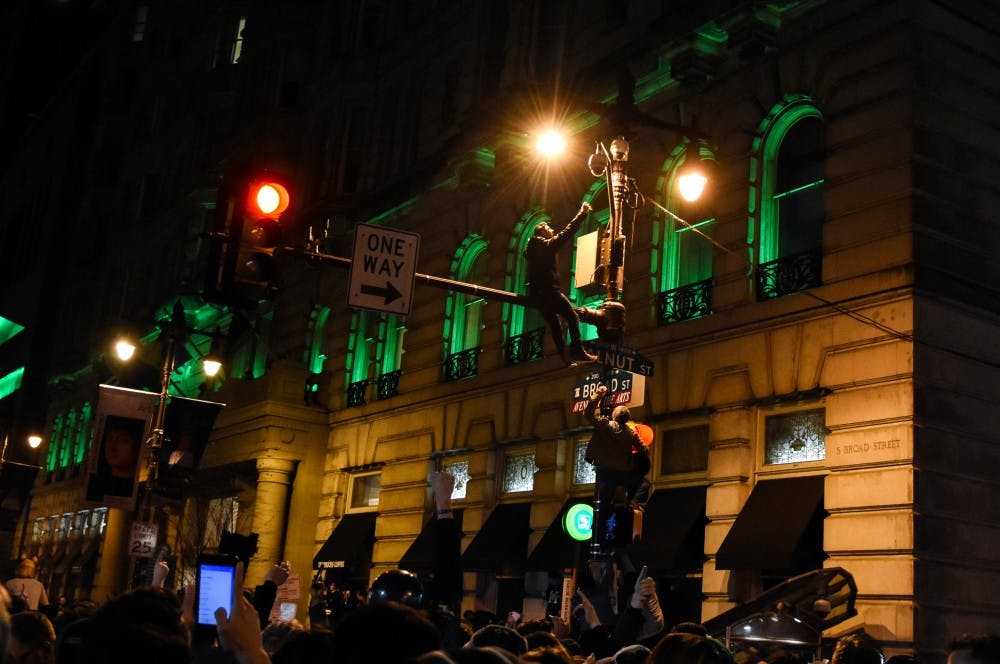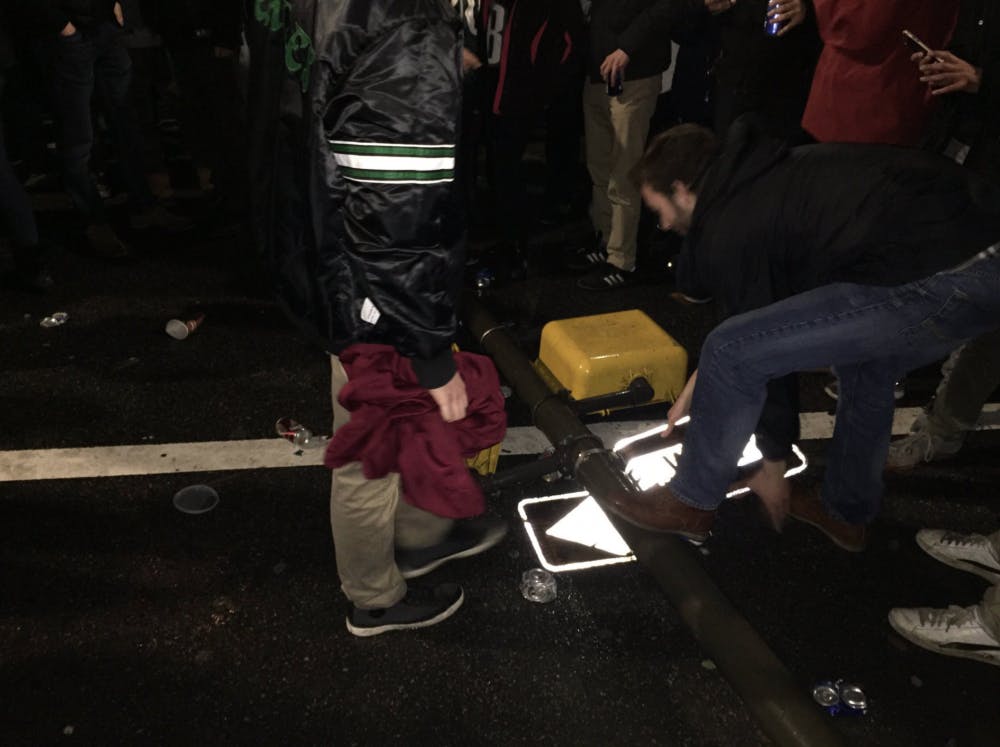
The beginning of this month was marked with a historic win for the city of Philadelphia. After three attempts at the title, Philadelphia’s treasured football team saw its first-ever Super Bowl win. Such a win was due cause for a celebration that could parallel its historical significance. Yet, for many, the festivities extended beyond the confines of the living room. Thousands of Philadelphians gathered in Center City, where unrest and rioting was rampant. However, the revelry heard all across Philadelphia the night of Feb. 4 and the necessary cleanup the morning of Feb. 5 was emblematic of something very distant from celebration: an increasingly troubling double standard in policing.
That Sunday night, Eagles fans swarmed the streets of Center City, many in their midnight green jerseys and beer in hand. Majority-white crowds felt emboldened and used the Eagles’ victory as justification to wreak havoc in their own city. People climbed atop poles, jumped on newsstands, looted stores, and set fire to city streets. Yet, despite the intensity and sheer volume of rioting and acts of vandalism, there was minimal police force keeping rioters in check.
What’s more concerning, however, is the readiness of police force in the case of peaceful Black Lives Matter protests. It seems as though, the biggest difference here is in demographics: celebrating white football fans versus black protesters voicing injustices.

The Black Lives Matter of Philadelphia response to Sunday’s events couldn’t have rang truer:
"It is nothing new to us that hordes of predominantly white fans setting fires, flipping over cars, and destroying property are viewed as 'rowdy' and engaged by police in a nonthreatening manner, while crowds of predominantly black and brown people blocking traffic or even holding candle light vigils to protest state violence against black and brown people are met with scores of hostile police and viewed as 'violent.'"

It’s almost frightening that in the case of actually violent and disruptive acts, the police force wasn’t prepared to keep fans accountable. Yet, in the case of peaceful protest, advocating for protection against unjust law enforcement, police reinforcement seem prepared with a militaristic response. Meanwhile, football fans that are looting gas stations, demolishing light poles, and setting vehicles on fire are not looked at as criminals, but rather as excited fans giving praise where it is due. The same courtesy given to the crowd of fans that night has rarely, if ever, been given to black protesters.
These responses, and lack thereof, are indicative of a greater issue at hand: a violent perception of the Black Lives Matter movement and its supporters. Much like the Civil Rights Movement of the 1960s, BLM has been peacefully motivated but has rarely been treated as such. Statements made last year by John McNesby, the president of Philadelphia’s largest police union, the Fraternal Order of Police Lodge #5, are emblematic of such beliefs. He called Black Lives Matter activists a “pack of rabid animals” and a “racist hate group determined to instigate violence.” President Donald Trump, while on the campaign trail, called the movement “inherently racist.”

This isn’t a new issue, however. Back in 2008, after the Phillies won the World Series, the same patterns occurred — car-flipping and all. This double-standard isn’t an issue confined to the city-lines of Philadelphia. All around the nation, there seems to be undue militaristic responses to BLM. The iconic photo taken in Baton Rouge, La. speaks louder than my words ever could. From the protests of the civil rights era, where black protesters were hosed down, clubbed, and attacked for their pursuit of equal rights, to the police bombings of black activist homes in 1985 in Philadelphia, violent responses to black activists are not uncommon. We’ve come a long way since then, but true justice is the result of a continuous quest to do better.
That Sunday night into Monday morning would have marked the 23rd birthday of Trayvon Martin, a victim of a justice system still struggling to truly value black bodies. It couldn’t have been more of an apt time to recognize changes that still need to be made. Black Lives Matter continues to fight for lives like his everyday that are being unrightfully taken and unjustly underserved. The Super Bowl riots raised a trying question: How can it be that our police forces are more likely to call out a cry for justice than they are unwarranted rioting?
As Black History Month comes to a close, maybe it's time for all of us to reflect and reassess. The same black bodies that are being celebrated this month should also be valued every other day of the year.
The Daily Pennsylvanian is an independent, student-run newspaper. Please consider making a donation to support the coverage that shapes the University. Your generosity ensures a future of strong journalism at Penn.
Donate







